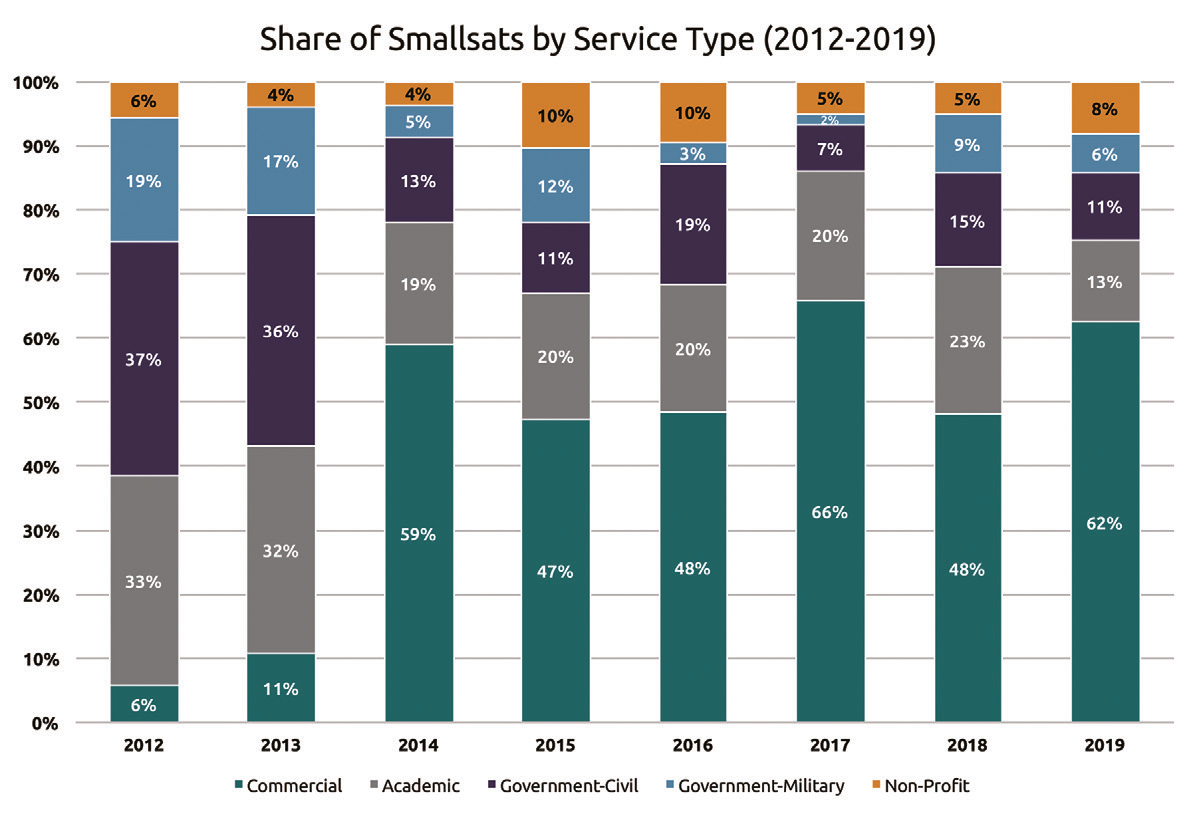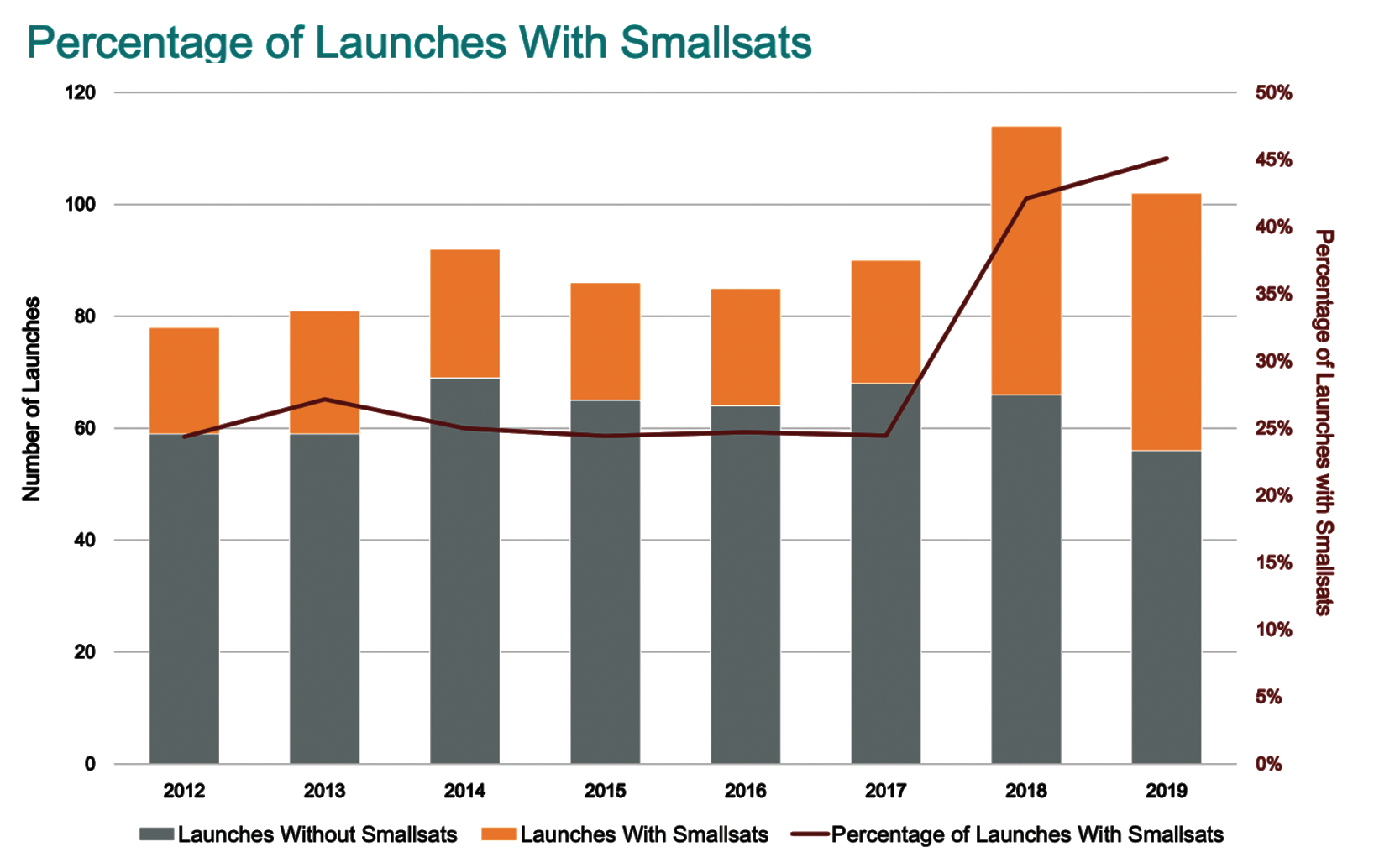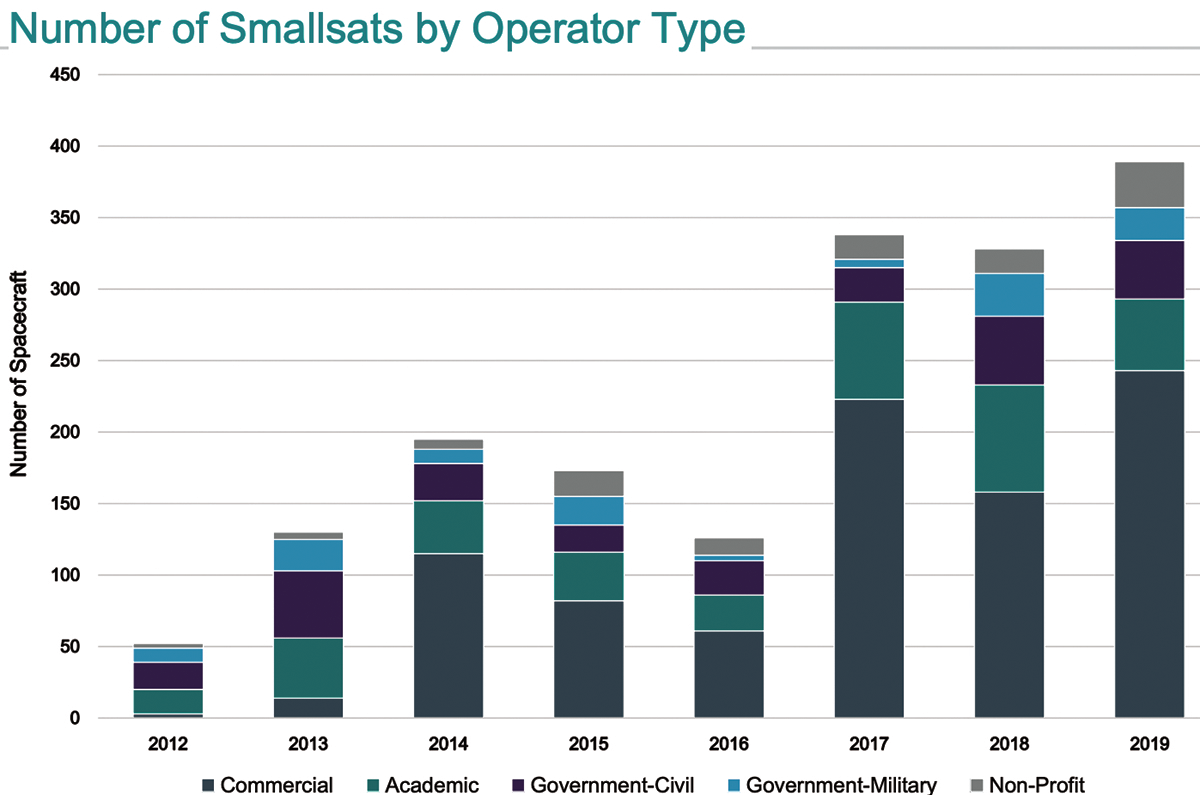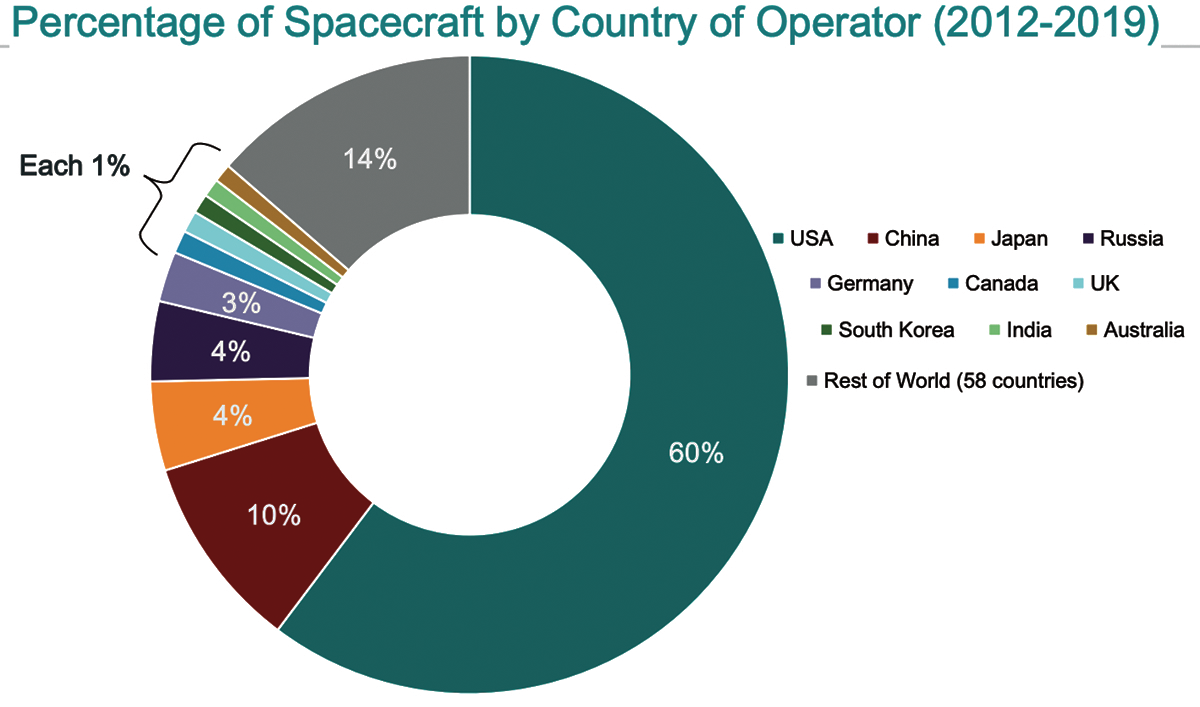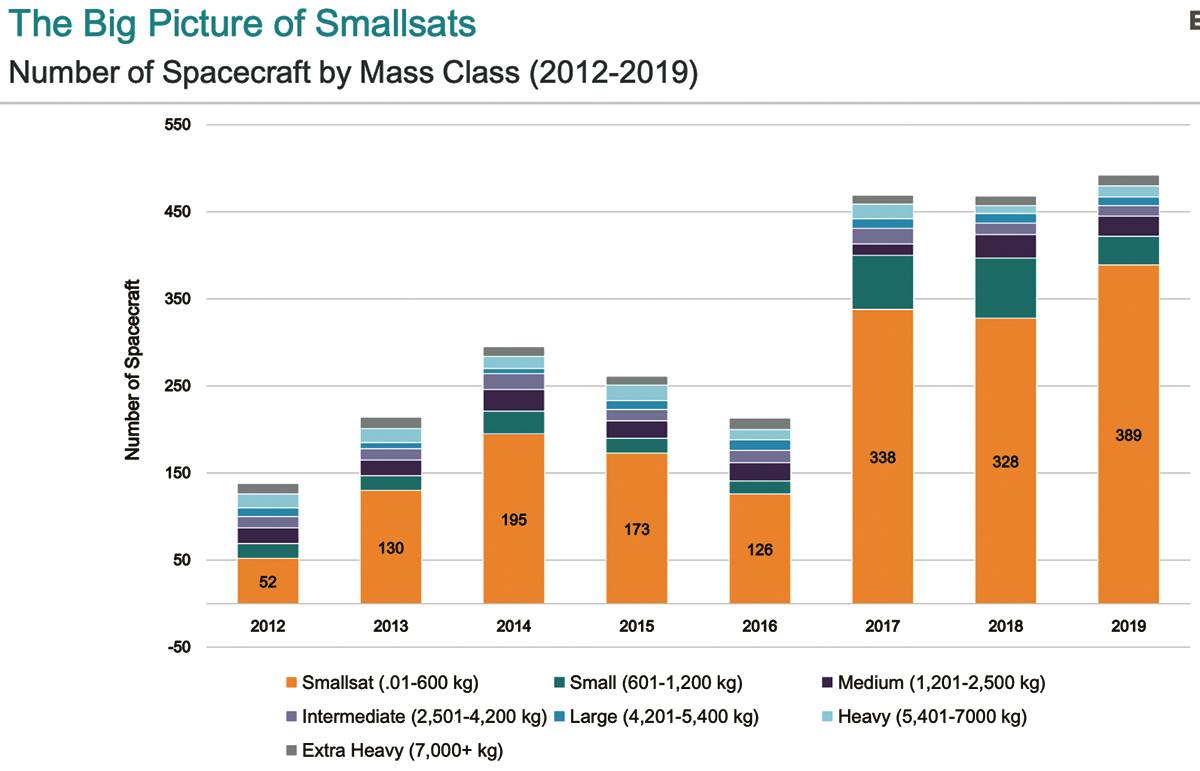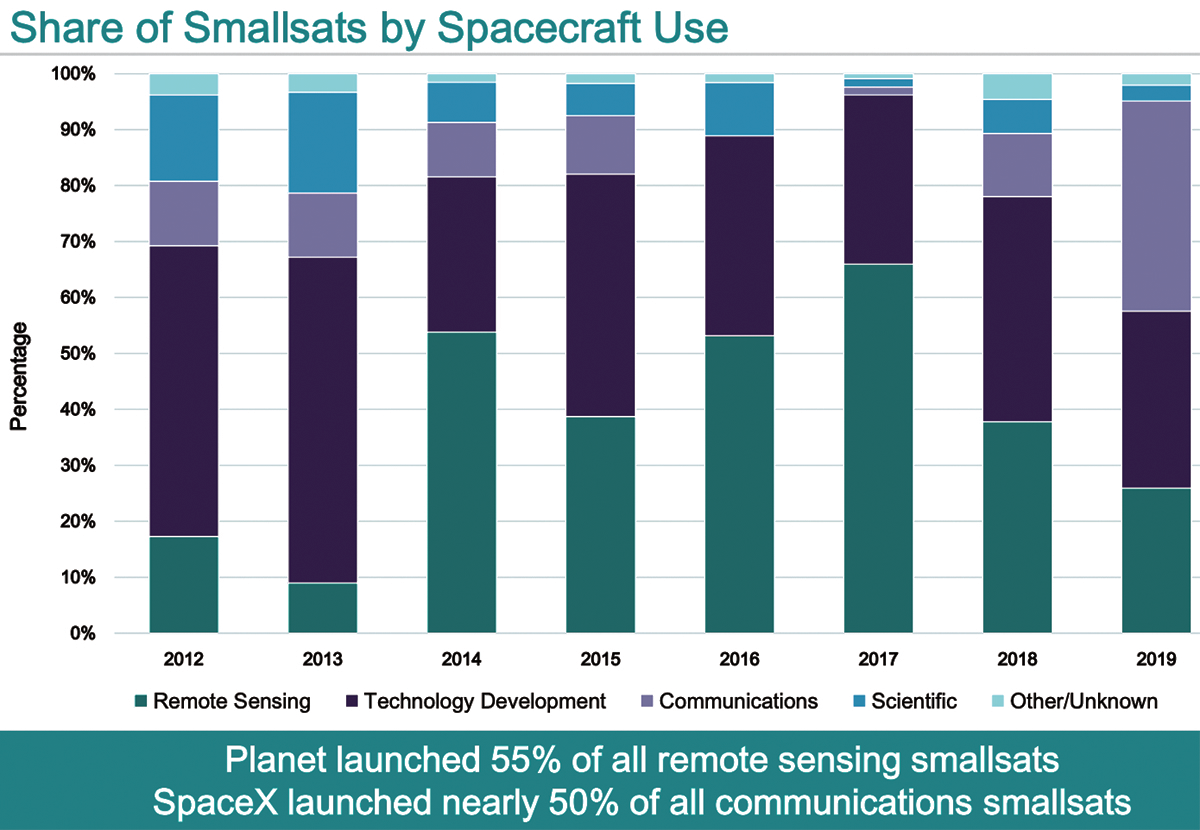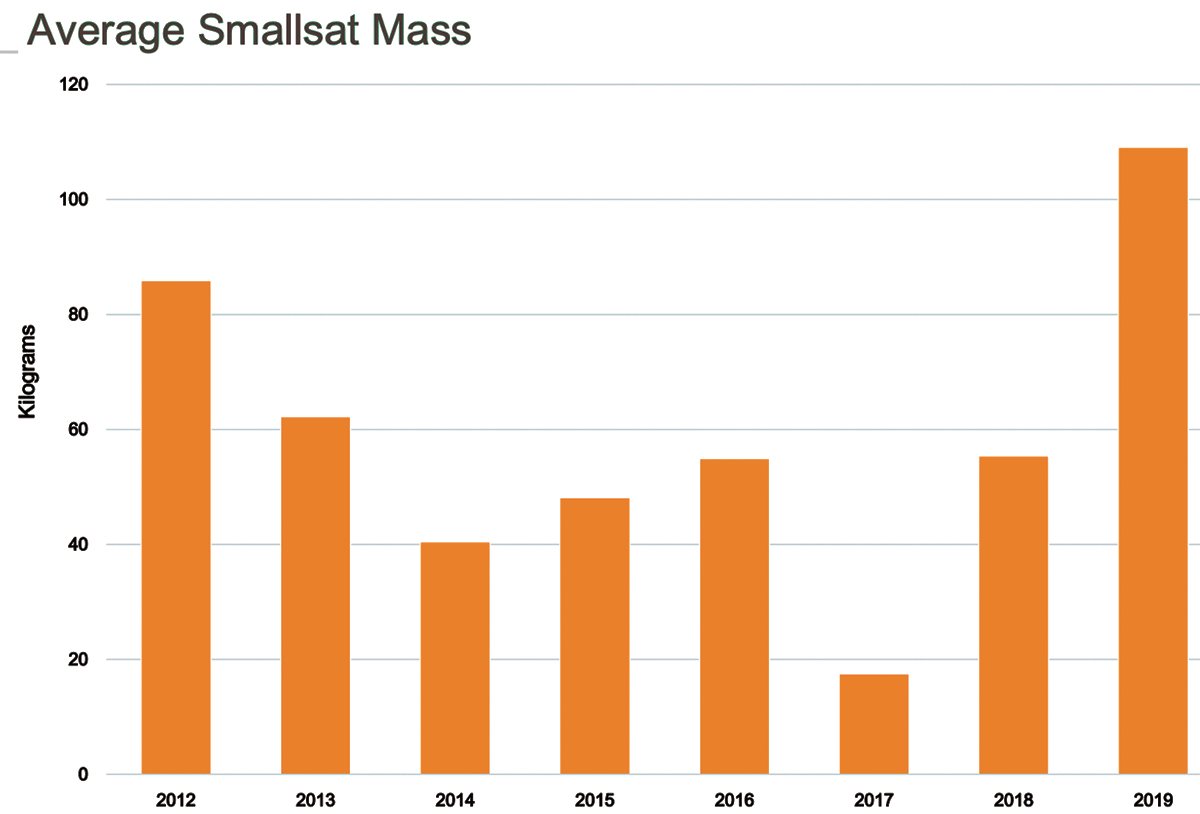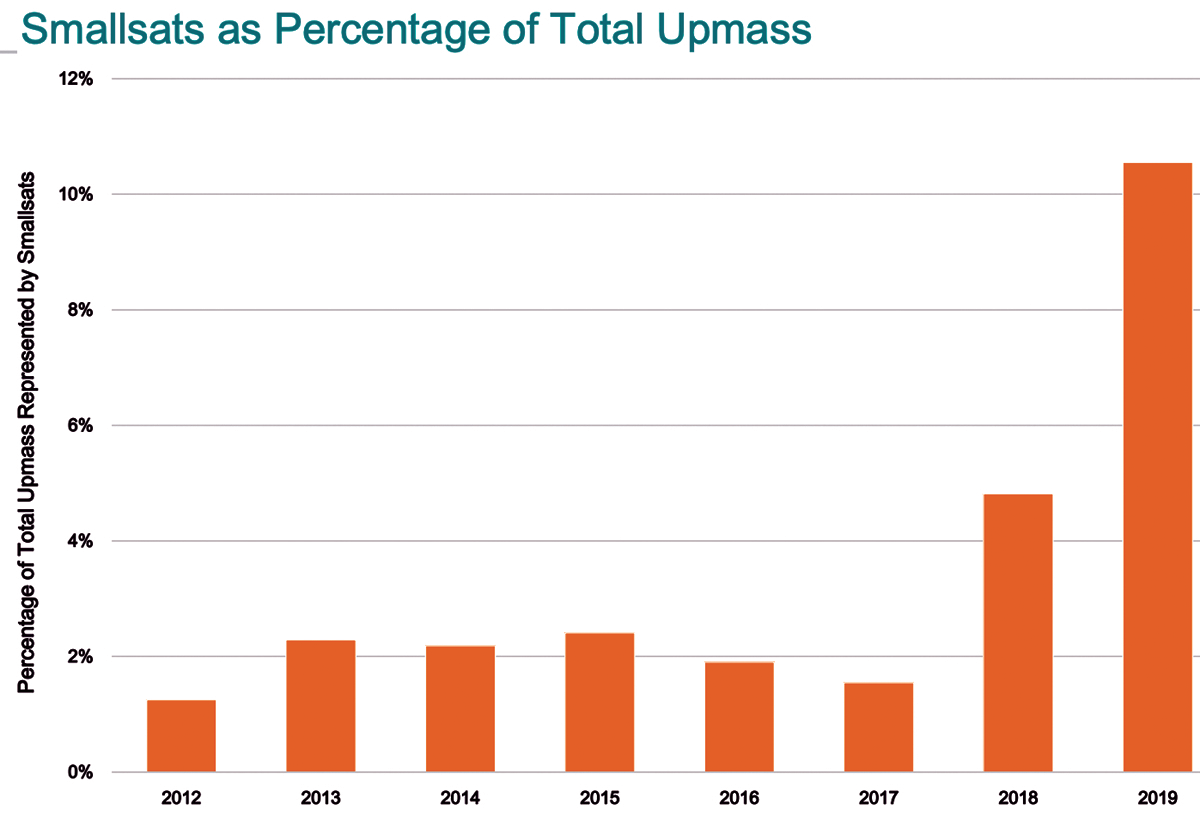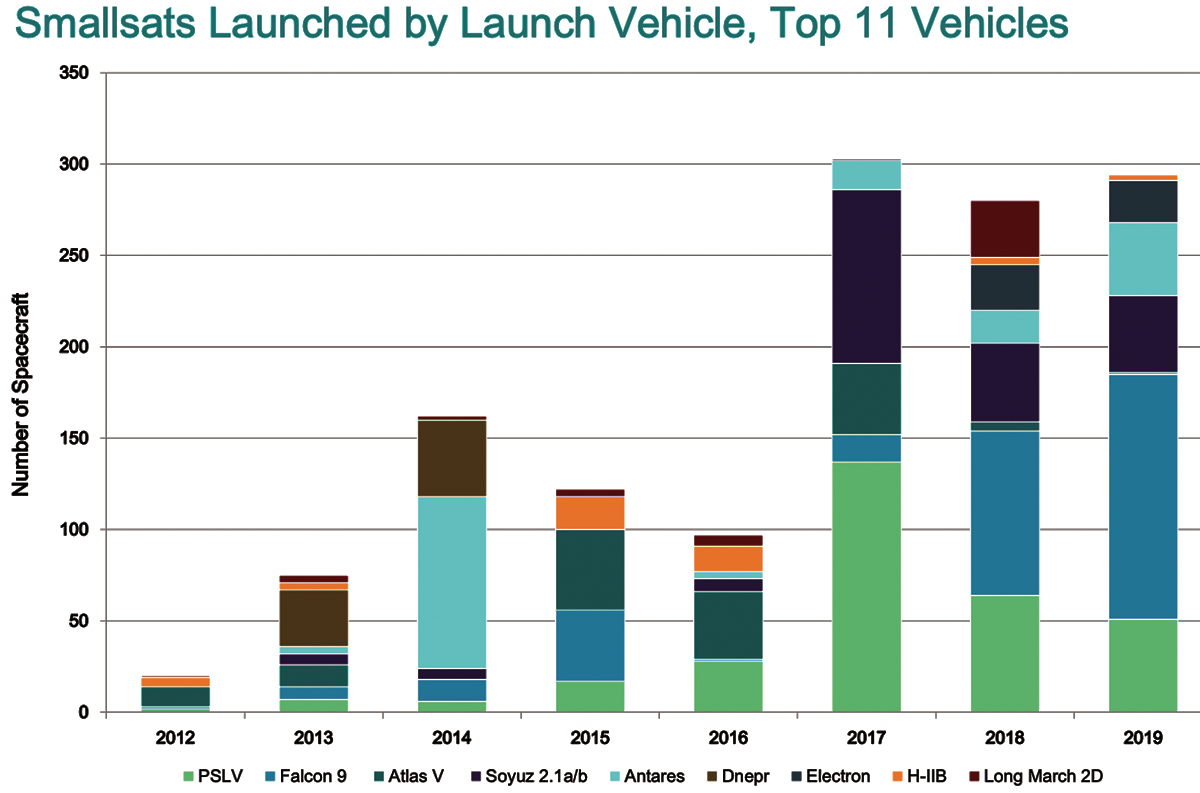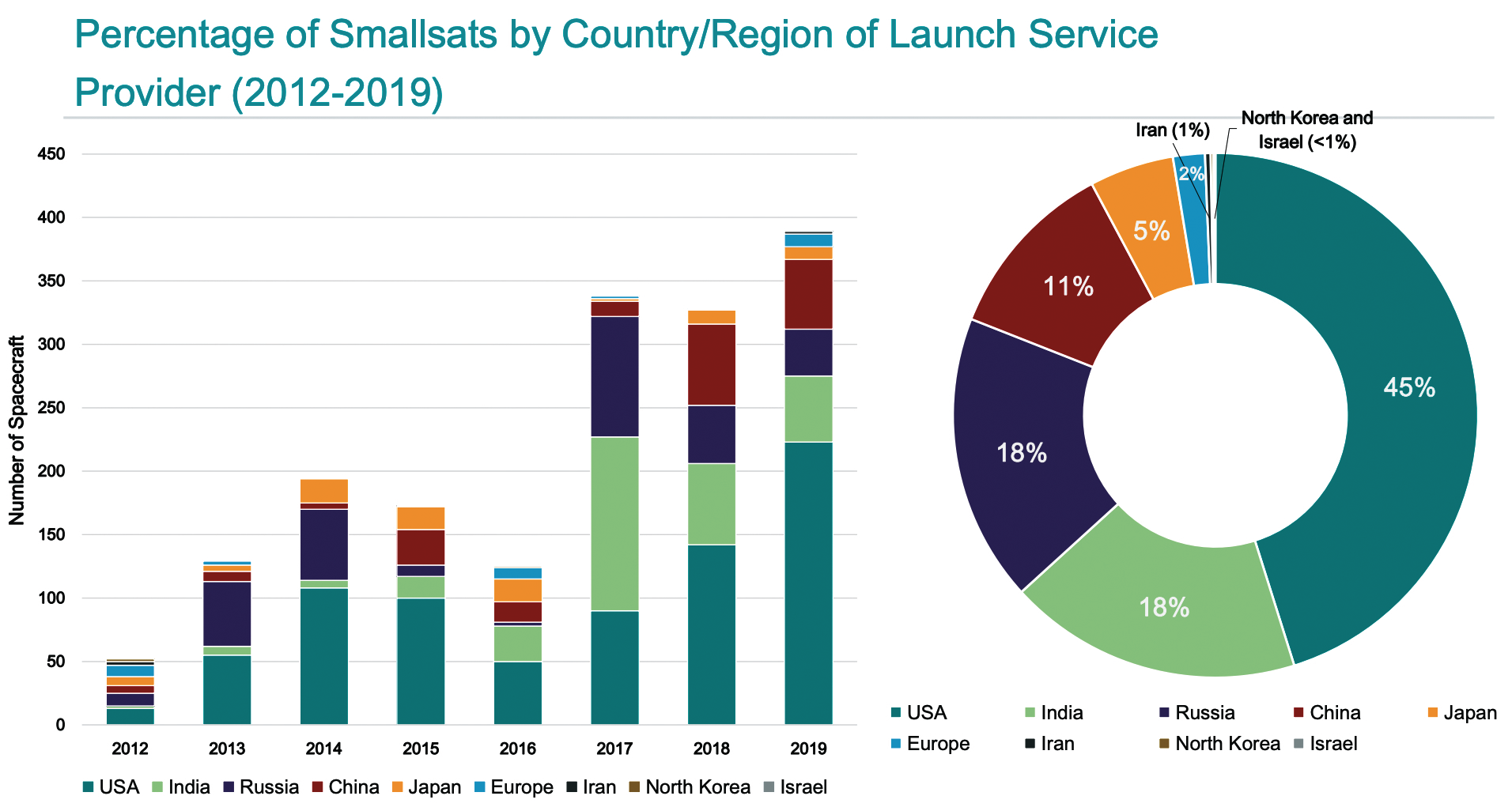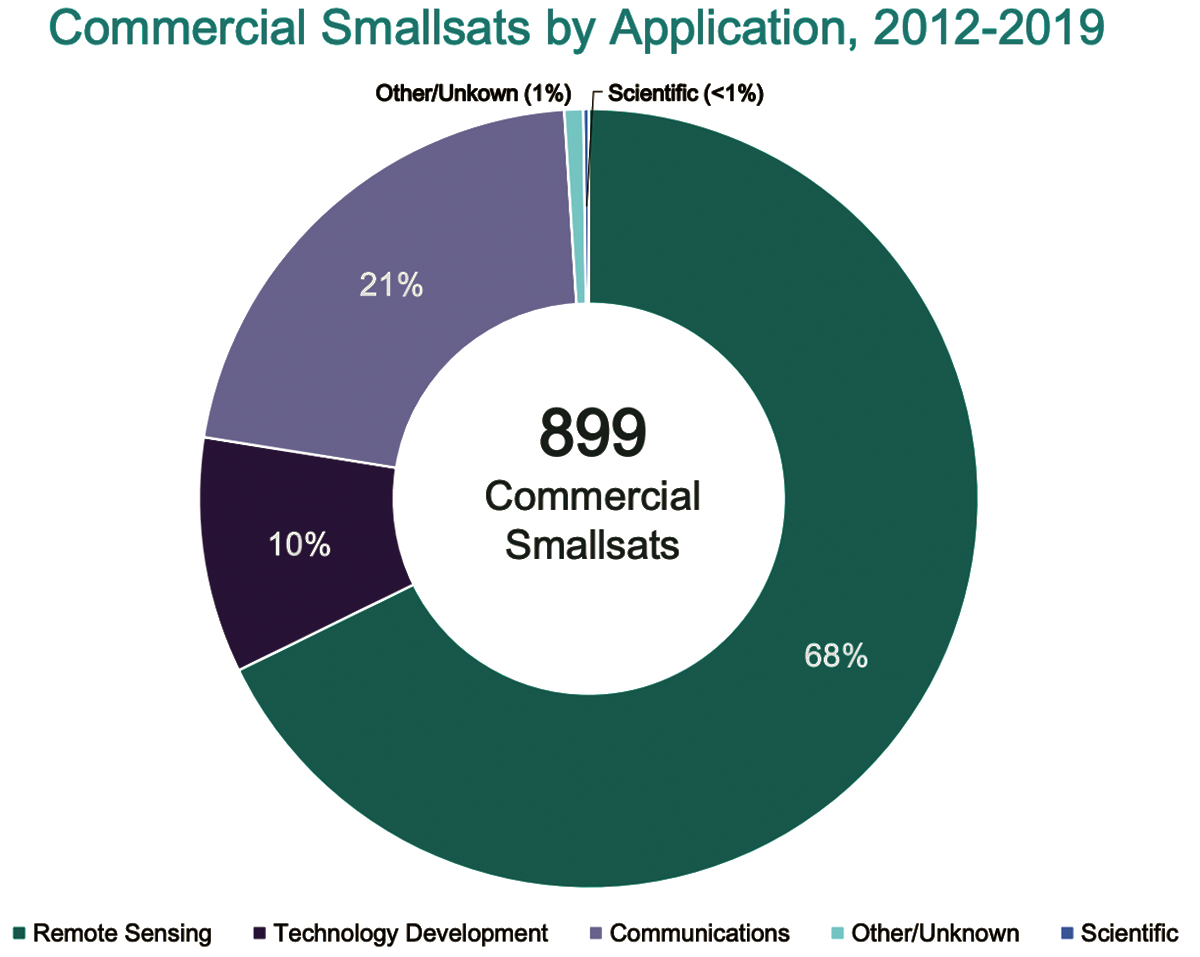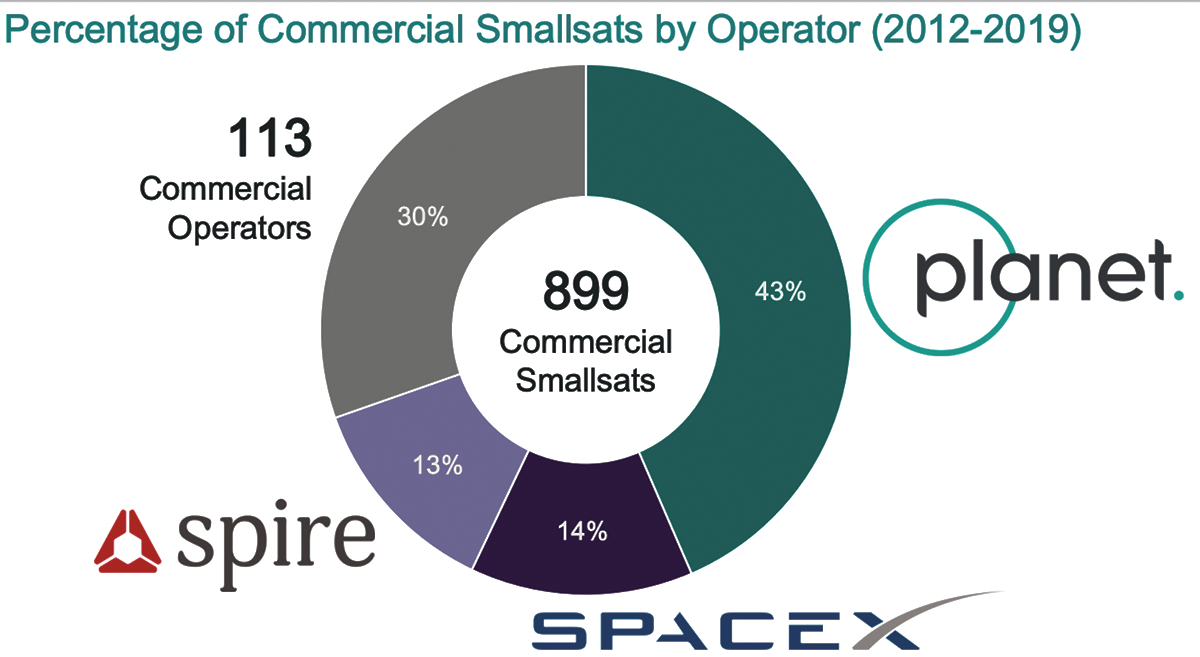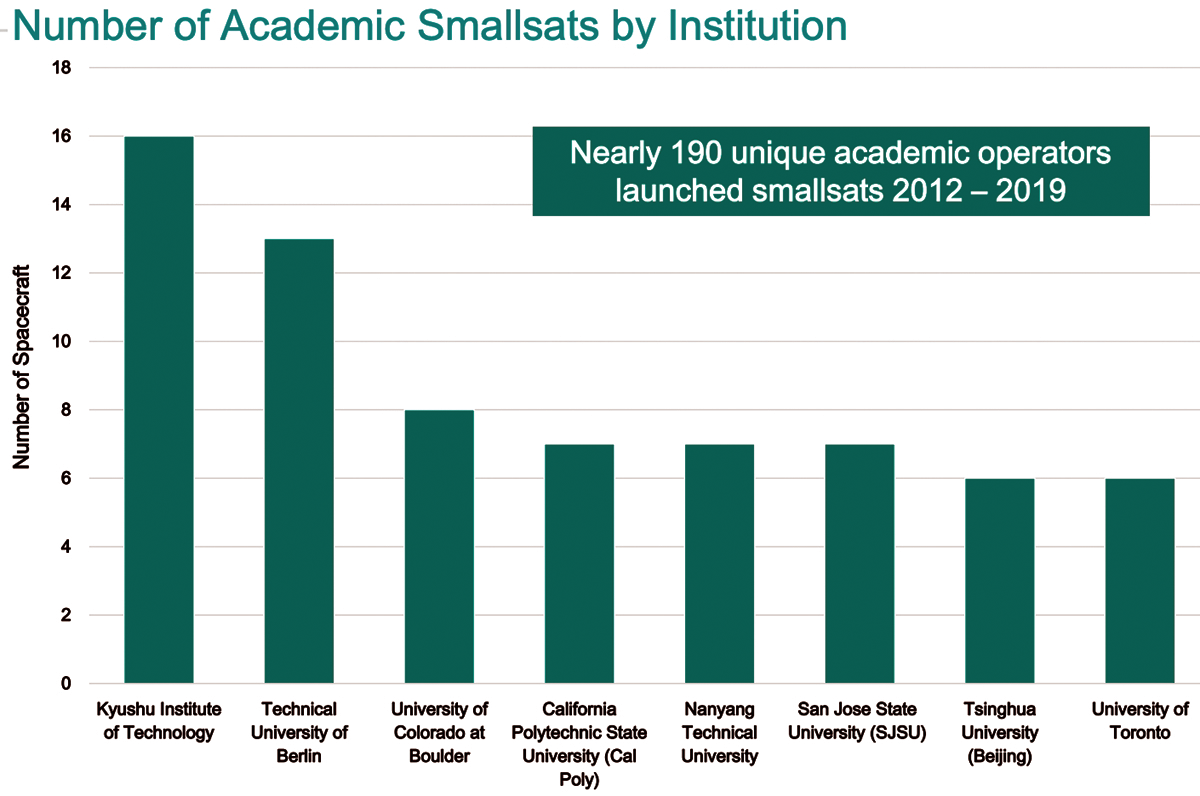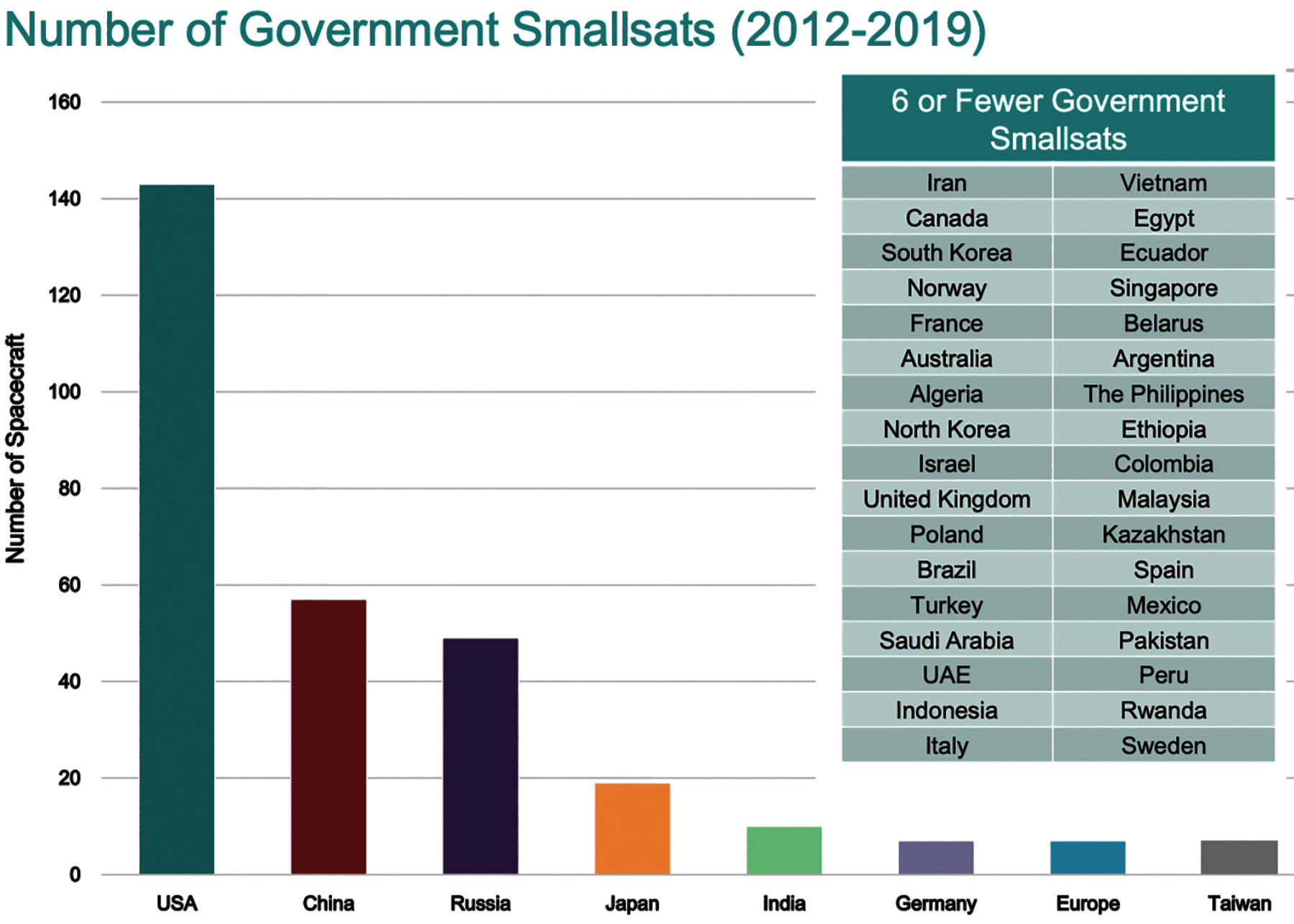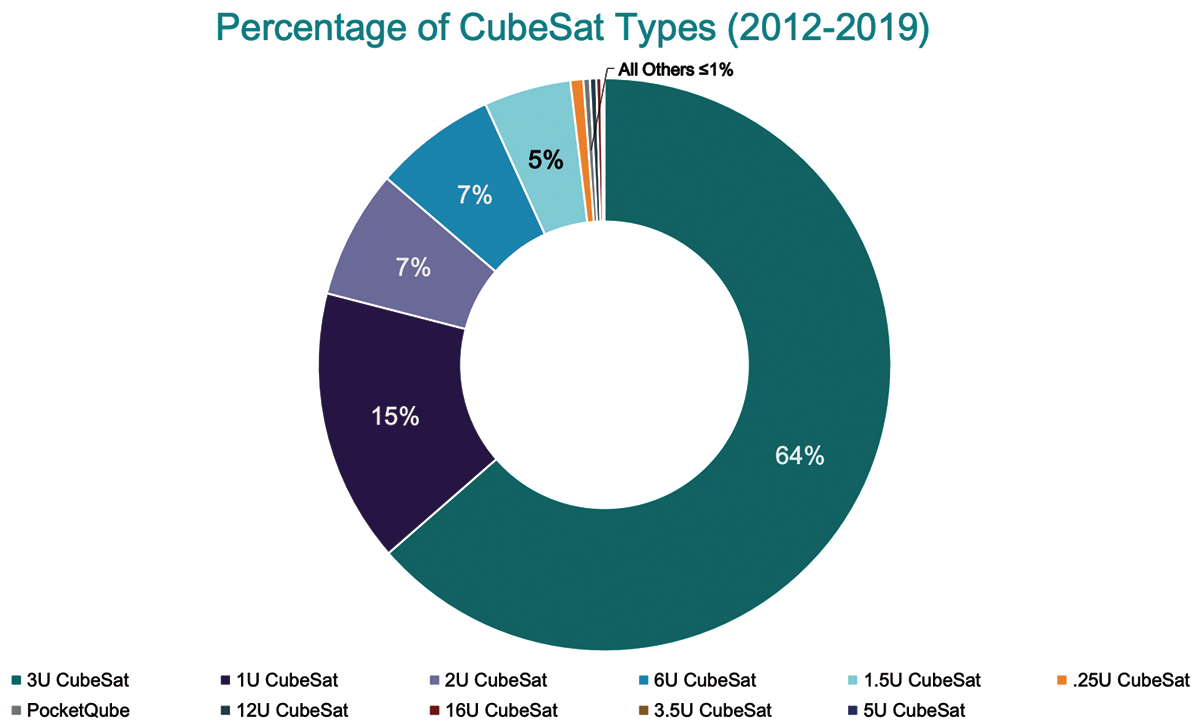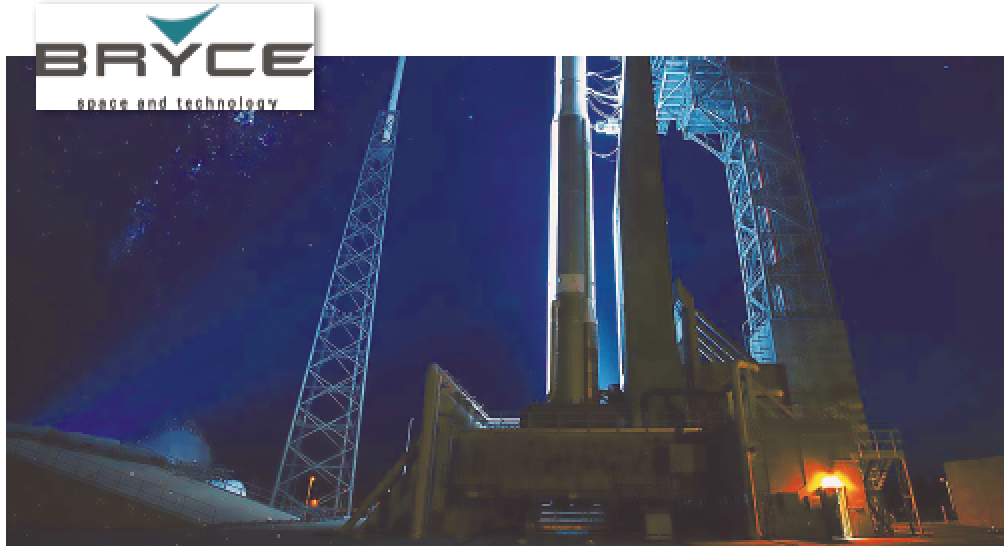Introduction
Although definitions vary, 600 kg. and under reflects the five smallest mass classes defined by the Federal Aviation Administration (FAA)
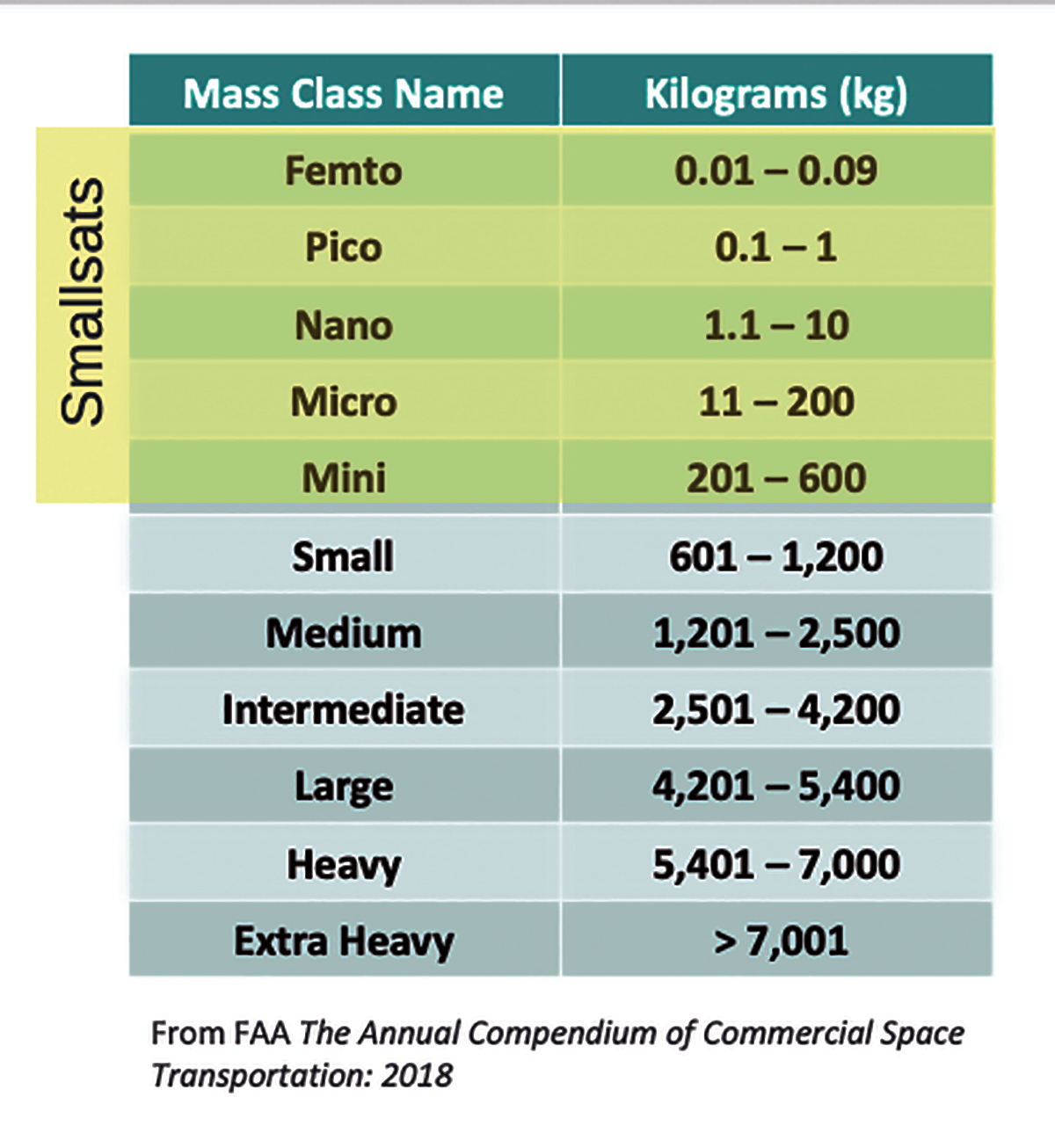
• ‘Smallsat,’ or ‘very small satellites,’ are often used to refer to smaller satellites
• Cubesats are an established “kit” form of smallsat
► They use standard 10 cm3 form factor (1U), ~ 1 kg.
► They can combine to form 3U, 6U, 12U, or more
• Smaller satellites are of increasing interest; more widely used in recent years
• Bryce identifies smallsats launched, regardless of operational status and include smallsats that have been destroyed due to launch failures
2019 Activity Highlights
The average smallsat mass was 109 kg, nearly doubling from 55 kg. in the previous year and increasing by 6x from 2017. Forty-five percent of all launches included smallsats, nearly doubling from 24 percent in 2012. Fifty-seven percent of smallsats were launched from the U.S. and 41 percent of all smallsats were launched via deployment from the International Space Station (ISS). Typical smallsat applications included remote sensing, communications, science and technology development.
Commercial Smallsats
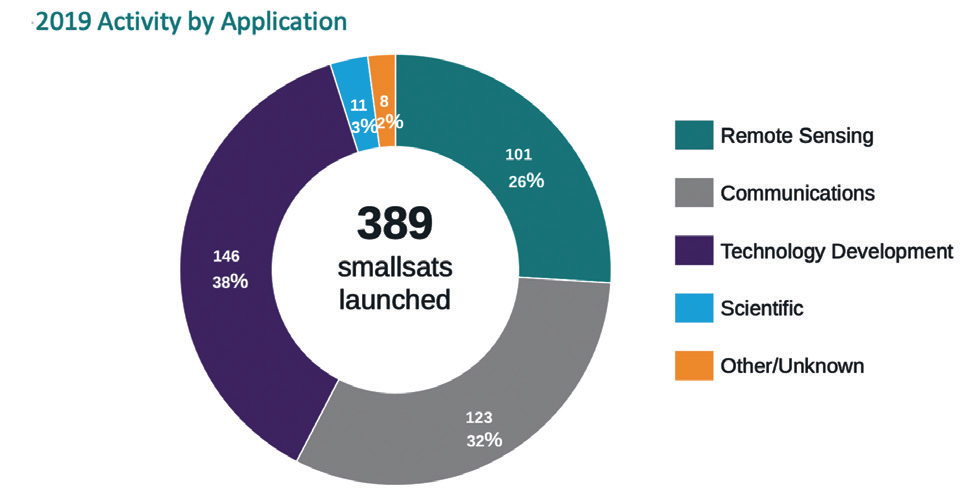
2019 Activity Highlights The average smallsat mass was 109 kg, nearly doubling from 55 kg. in the previous year and increasing by 6x from 2017. Forty-five percent of all launches included smallsats, nearly doubling from 24 percent in 2012. Fifty-seven percent of smallsats were launched from the U.S. and 41 percent of all smallsats were launched via deployment from the International Space Station (ISS). Typical smallsat applications included remote sensing, communications, science and technology development.
In the last eight years, 899 commercial satellites were launched, of which more than 68 percent were for remote sensing. More than 80 percent were manufactured by U.S. companies. Planet, SpaceX and Spire are the largest operators and account for 70 percent of all commercial satellites. From 2016 to 2019, the total number of commercial smallsats launched increased by 4x.
Cubesats
In total, 1,100_ cubesats were launched between 2012 and 2018.
• About 60 percent have provided commercial services; about one-third were Planet’s Dove cubesats.
• Fifty-six percent of these cubesats were commercial in nature and 34 percent were Planet Dove cubesats.
• More than 10 percent were government cubesats, with approximately two-thirds of them for civil purposes.
• About 25 percent were launched by academic organizations.
The number of cubesats launched per year grew fro 23 in 2012 to 164 in 2019, but have fallen from the 230 in 2018.
View the entire Smallsats by the Numbers 2020 report at: brycetech.com/reports.html
